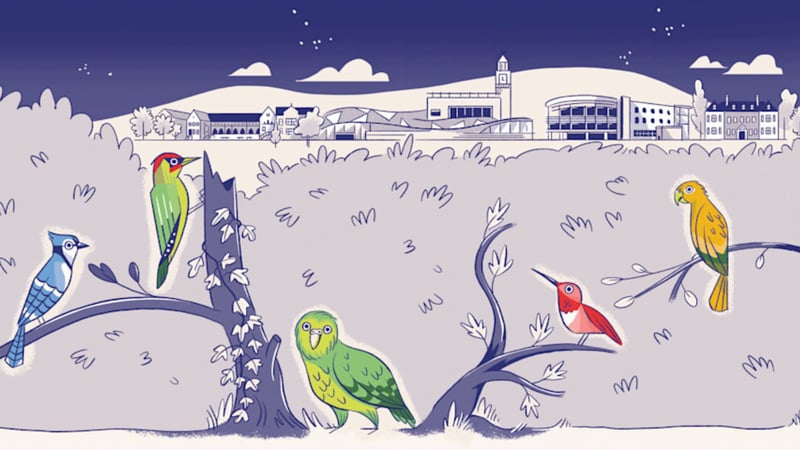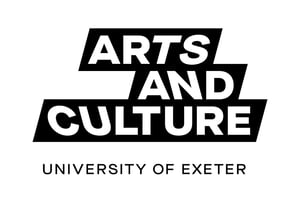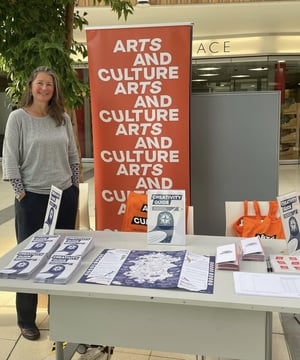Mapping creativity at the University of Exeter
What does creativity look like? At the University of Exeter, it’s not confined to the arts, creativity is woven through everything. Working with the university’s Arts and Culture team, we designed a vibrant visual guide for staff - spanning all disciplines and departments - that makes creativity visible, accessible and impossible to ignore.
Creativity is central to fuelling innovation, collaboration and problem-solving across every discipline. Yet, as Sarah Campbell, University of Exeter’s Associate Director for Arts and Culture, explains: “There can be a perception that creativity is something belonging only to certain people or subjects.”

Challenge
After six years of working closely with colleagues across the university, Sarah noticed a recurring theme: Many had an appetite to bring more creativity into their teaching and research, but were not sure where to start. “People had a limited sense of what creativity could mean in their own work,” she says.
 She wanted to change that. Her goal was to help colleagues see the bigger picture - to visualise how creativity connects across all aspects of university life, and to show that it’s accessible to everyone.
She wanted to change that. Her goal was to help colleagues see the bigger picture - to visualise how creativity connects across all aspects of university life, and to show that it’s accessible to everyone.
From the start, her ambition was clear: to create a single, welcoming space that brings together all of Exeter’s creativity initiatives - something inclusive, inspiring and easy to explore.
“People had a limited sense of what creativity could mean in their own work...I knew I wanted a visual way to open up those conversations - to offer a bird’s-eye view of all that’s possible.”
Sarah Campbell, Associate Director for Arts and Culture, University of Exeter
“I knew I wanted a visual way to open up those conversations - to offer a bird’s-eye view of all that’s possible,” Sarah recalls. “I just didn’t know what it looked like yet. I needed professionals like Scriberia to help realise it.”
WANT TO MAP YOUR VISION?
Solution
Working closely with a cross-disciplinary team from Exeter, we helped transform that “fuzzy idea” into a vivid, visual guide - one that celebrates creativity in all its forms, invites exploration and shows how creative thinking flows through teaching, research and personal development.
“It was a truly collective process,” says Sarah. What began with a core team of six soon expanded to include more than a dozen colleagues from across the university, each contributing ideas, feedback and inspiration. From a hands-on workshop at The InkTank, our King’s Cross studio, to remote sessions using Mural boards to gather thoughts and feedback, the collaboration was lively, generous and full of ideas. With every sketch and conversation, the guide became sharper, richer and more reflective of Exeter’s diverse creative community.



The finished A2 guide brings together questions such as How can I bring more creativity into my daily work? and How do I embed creative processes in complex projects? QR codes link directly to online resources, extending the experience from page to screen. And while it’s a beautifully tactile, paper-based artefact, it’s also designed to complement digital platforms - offering a holistic way for staff to explore creativity.
The design features birds soaring across the landscape - a metaphor for creative journeys and a nod to that “bird’s-eye view” of everything that’s possible. The guide’s design also draws on Medieval mappa mundi traditions - where geographical accuracy takes second place to the beautiful depiction of stories and culture - evoking a sense of exploration and discovery. Accessibility and inclusion were central to every design decision - from colour contrast to language - ensuring the guide truly reflects the diversity of Exeter’s community.
As Sarah says, “Scriberia just elevated everything - the way the ideas were made better was more than I could even have hoped for.”
Results
 Now shared across all four campuses, the Creativity Guide is sparking conversations everywhere - pinned on notice boards, handed out in meetings and displayed at events. The university is promoting it through newsletters, bulletins, social media and faculty hubs, while an expanded digital version offers even more resources online.
Now shared across all four campuses, the Creativity Guide is sparking conversations everywhere - pinned on notice boards, handed out in meetings and displayed at events. The university is promoting it through newsletters, bulletins, social media and faculty hubs, while an expanded digital version offers even more resources online.
“People love that it’s paper,” Sarah says. “It’s beautiful, it’s positive - and in a challenging time for higher education, that really matters.”
As Anna Bunt, Communications and Engagement Lead, adds: “We’re so used to online resources - but having something tangible and beautiful, almost a piece of art in itself, makes it feel special.”
Looking ahead, there’s space for new iterations - maybe even a student version one day - as the university’s strategy evolves. For now, the guide stands as a living, evolving tool: one that lifts spirits, builds confidence and reminds everyone that creativity belongs to all of us.
“I love working with people who are just really good at what they do because it makes everyone raise their game - so it was really exciting to be around and work alongside them.”
Sarah reflects, “I enjoyed working with Scriberia enormously… And, wow, the talent! I love working with people who are just really good at what they do because it makes everyone raise their game - so it was really exciting to be around and work alongside them.”
To learn more about the making of the guide, visit: https://www.artsandcultureexeter.co.uk/news/the-making-of-the-creativity-guide
